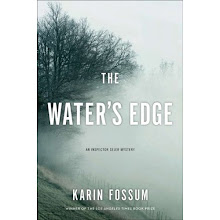Welcome back Dear Readers.
Results from
The Quiz For A Million! Part Deux!
are in!
From
Senegal to Kazakstan...
Mauritius to Reunion...
your voices have been heard.
And the winner
came from just around the corner!
Or, at least,
simply across the country.
Brooke Breton
of Pacific Palisades, CA
won with her answer,
"the novelist Milan Kundera".
Hats off to you Brooke!
Kundera's
new collection of essays
has just been published.
Here's how his publisher,
Harper Collins,
describes
Encounter.
"A brilliant new contribution to Kundera's ongoing reflections on art and artists, written with unparalleled insight, authority, and range of reference and allusion.
Milan Kundera's new collection of essays is a passionate defense of art in an era that, he argues, no longer values art or beauty. With the same dazzling mix of emotion and idea that characterizes his novels, Kundera revisits the artists who remain important to him and whose works help us better understand the world we live in and what it means to be human. An astute reader of fiction, Kundera brings his extraordinary critical gifts to bear on the paintings of Francis Bacon, the music of Leos Janacek, and the films of Federico Fellini, as well as the novels of Philip Roth, Fyodor Dostoyevsky, and Gabriel García Márquez, among others. He also takes up the challenge of restoring to its rightful place the work of Anatole France and Curzio Malaparte, major writers who have fallen into obscurity.
Milan Kundera's signature themes of memory and forgetting, the experience of exile, and the championing of modernist art are here, along with more personal reflections and stories. Encounter is a work of great humanism. Art is what we possess in the face of evil and the darker side of human nature. Elegant, startlingly original, and provocative, Encounter follows in the footsteps of Kundera's earlier essay collections, The Art of the Novel, Testaments Betrayed, and The Curtain."
I particularly enjoyed
Kundera's description,
of his fellow countryman/composer,
Janacek's,
beautiful music.
His
lyrical,
evocative pieces
In The Mists
and
On The Overgrown Path
had come to mind
during some of the refreshingly
cooler and rainy weather
we've had recently.
Don't miss this wonderful music,
particularly on
a grey & moody day.
And pick up
a copy of
Encounter.
It will stimulate
your brain.
















































_-_Project_Gutenberg_eText_19028.jpg)
















